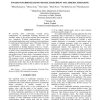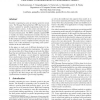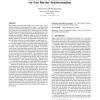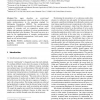SIAMCOMP
2010
14 years 2 months ago
2010
Synchronization is often necessary in parallel computing, but it can create delays whenever the receiving processor is idle, waiting for the information to arrive. This is especia...
IJBC
2010
14 years 4 months ago
2010
The chaotic dynamics of fractional-order systems has attracted much attention recently. Chaotic synchronization of fractional-order systems is further studied in this paper. We inv...
ECCV
2010
Springer
14 years 4 months ago
2010
Springer
Time synchronization of video sequences in a multi-camera system is necessary for successfully analyzing the acquired visual information. Even if synchronization is established, it...
ICMCS
2009
IEEE
14 years 5 months ago
2009
IEEE
IP networks allow constructing versatile device configurations for multimedia streaming. However, the stochastic nature of the packet-switched data transmission may complicate IP-...
ICASSP
2009
IEEE
14 years 5 months ago
2009
IEEE
A unified framework to jointly solve the two problems of localization and synchronization at the same time is presented in this paper. The joint approach is attractive because it ...
CLUSTER
2009
IEEE
14 years 5 months ago
2009
IEEE
Scientific computing has seen an immense growth in recent years. The Message Passing Interface (MPI) has become the de-facto standard for parallel programming model for distribute...
IPPS
2010
IEEE
14 years 5 months ago
2010
IEEE
The graphics processing unit (GPU) has evolved from a fixedfunction processor with programmable stages to a programmable processor with many fixed-function components that deliver...
CSREAESA
2010
14 years 5 months ago
2010
Component-based operating systems enable embedded systems to adapt system policies, mechanisms, and abstractions to the specific workloads and contexts of each system. The scope o...
TPDS
2002
14 years 7 months ago
2002
This paper considers a technique for composing global (barrier-style) and local (channel scanning) synchronization protocols within a single parallel discrete-event simulation. Com...
MMS
1998
14 years 7 months ago
1998
This paper describes an event–based synchronization mechanism, which is at the core of the inter– media synchronization in the upcoming standard for Multimedia Presentation, PR...




